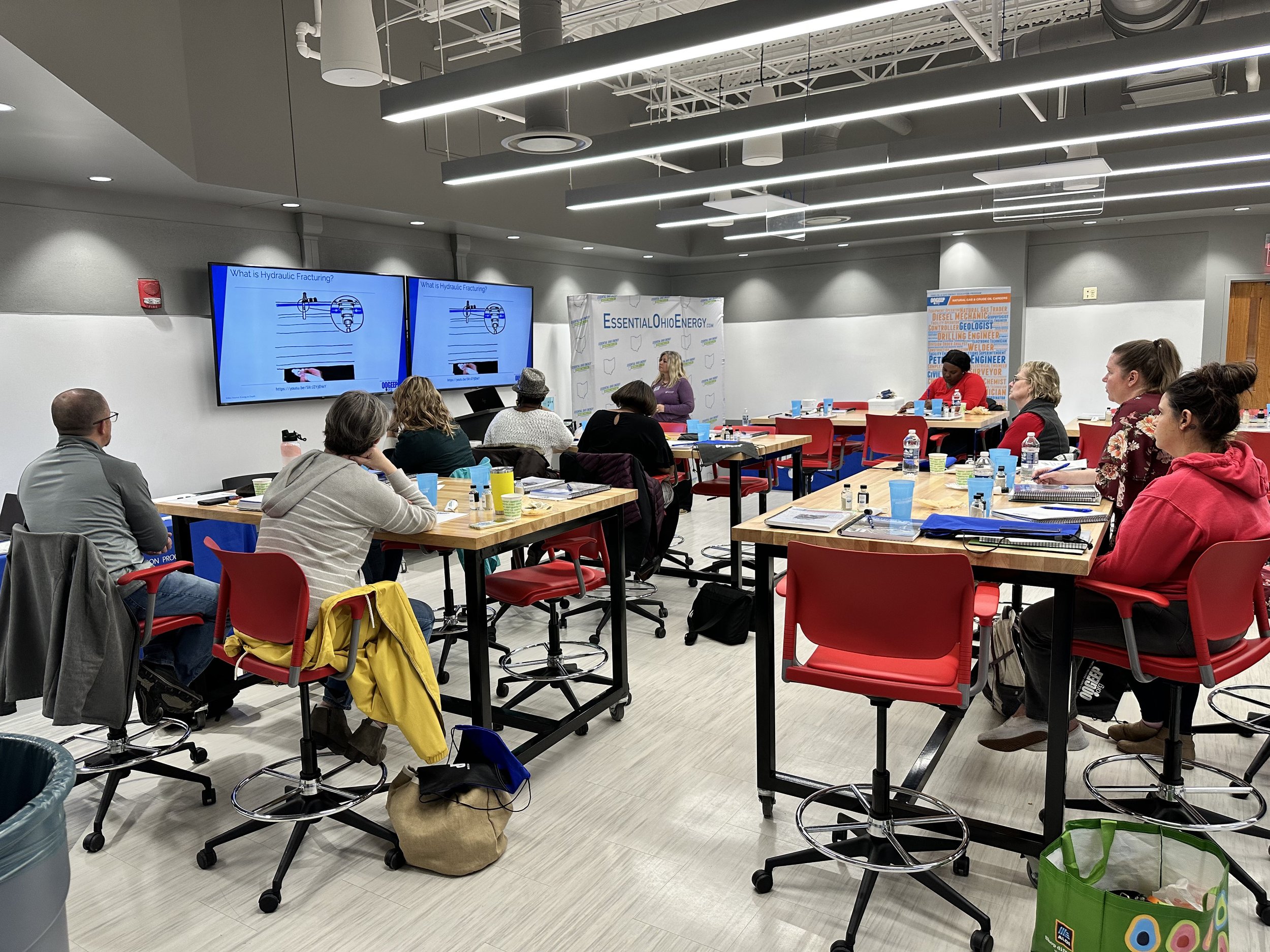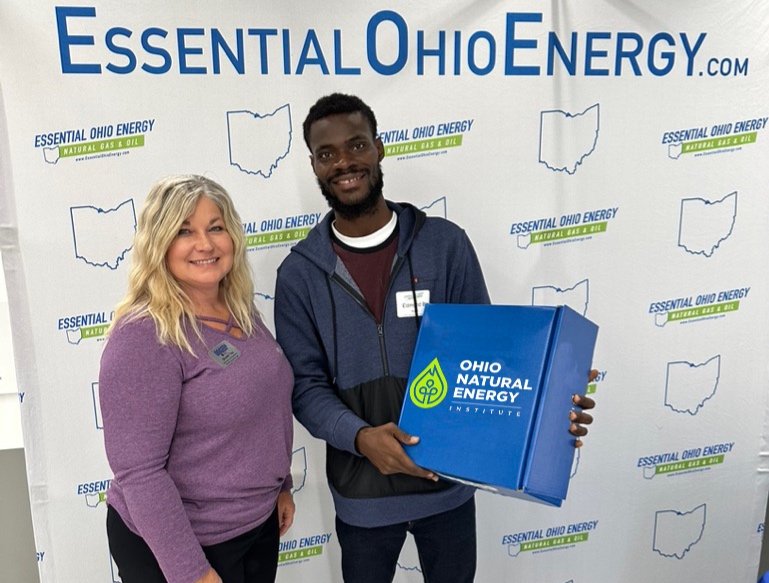STEM & Geology Professional Development Workshops & Field Trips
STEM & geology teacher workshops provide Ohio’s educators with factual knowledge about the natural gas and oil industry, along with the history, science, and geology behind it, to take back to their classrooms. Career connections are incorporated into the curriculums and lessons in order to help educate students about all of the opportunities that are available within the natural gas and oil industry. Participants receive curriculum books that meet state and national standards and include background information and multiple hands-on activities for each unit. Teachers are also equipped with supplies for many of the curriculum activities, and numerous other educational and resourceful materials. Each workshop is worth CEU credits and when applicable, teachers have the opportunity to attend field trips and acquire Ashland graduate credits.
2024 Teacher Workshops Open for Registration!
STEM TEACHER WORKSHOP
June 11, 2024
Classroom Workshop
Industry Dinner
June 12, 2024
Field Trip
Location:
FFA Camp Muskingum
Carrollton, OH
GEOLOGY TEACHER WORKSHOP
July 17, 2024
Classroom Workshop
Industry Dinner
July 18, 2024
Field Trip
Location:
H. R. Collins Repository Classroom
Delaware, OH
Thanks to Ohio’s natural gas and oil producers, these workshops and materials are provided free of charge to Ohio educators!
STEM Workshop Topics
Formation: Are fossil fuels renewable or non-renewable?
Experiments show how the earth “cooked” (heat and pressure) ancient plant and animal life to create fossil fuels. Create info graphics about geologic time and the rock cycle.
Migrating & Trapping: Is crude oil and natural gas found in large lakes underneath the earth’s surface?
Experiments show how crude oil and natural gas are trapped in porous rocks. Create 2D and 3D rock models to demonstrate porosity and permeability.
Exploration: How do we find these valuable fossil fuels?
Use contour mapping to look below the earth’s surface and “see” rock formations. Create models and calibrate measurements using blank grids.
Drilling & Well Stimulation: How do we recover crude oil and natural gas?
Use engineering design to create two models: a weight-bearing derrick and a working oil well applying principles related to porosity, permeability and flow of fluids to the surface.
Producing: What happens to crude oil and natural gas once it is produced? How is it transported?
Create a model pipeline and pipeline “pig” and apply principles of force, motion, velocity and engineering design.
Refining: How are crude oil and natural gas liquids (NGLs) transformed into useful products?
Use the chemistry distillation procedure to demonstrate the refining process. Follow lab safety procedures, collect data and understand the industry applications.
Petrochemicals & Products: What other products besides transportation fuels are made from crude oil and natural gas?
Explore a few of the 6,000 petroleum-based products. Design and implement a materials test for different petrochemical-based fabrics.
Geology Workshop Topics
Earth’s Layers
How did the Earth differentiate into its various layers? Which layers contain the underground reservoirs of hydrocarbons? Use modeling and graphic organizers to teach the composition, scaling and mapping of Earth’s layers.
Active Earth: From Continental Drift to Plate Tectonics
What evidence do we have to support the plate tectonic theory? How has the movement of plates contributed to the production of naturally occurring economic resources like crude oil and natural gas? Use puzzles, “edible models” and maps to understand Wegener’s Theory of Continental Drift, relative plate motion and sea floor spreading.
Mineralogy: The Building Blocks of Our Rocks
What is a mineral and what properties distinguish one mineral from another? How do petroleum geologists determine the organic materials in source rocks that produce hydrocarbons? Grow mineral crystals and test for hardness, specific gravity and other properties that distinguish one mineral from another.
Rocks vs Minerals
What distinguishes a rock from a mineral? What is the composition of source rocks for crude oil and natural gas? Identify and classify rocks using graphic organizers, physics and modeling.
Ohio’s Sedimentary Basins
What processes are responsible for the formation of the bedrock found in Ohio’s sedimentary basin? How are these processes responsible for the Utica and Marcellus shales present in Ohio today? Create a sedimentary basin model, calculate weathering rates, and design graphic organizers to understand how sediments, organisms, structures and rocks vary between depositional environments.
Earth’s Energy Resources
What processes are carbon sinks and sources? What are Ohio’s energy resources? Create a model to track carbon flow, experiment to find out if carbon is stored in rocks and use a graphic organizer assessment to trace pathways of carbon cycles in the environment.


